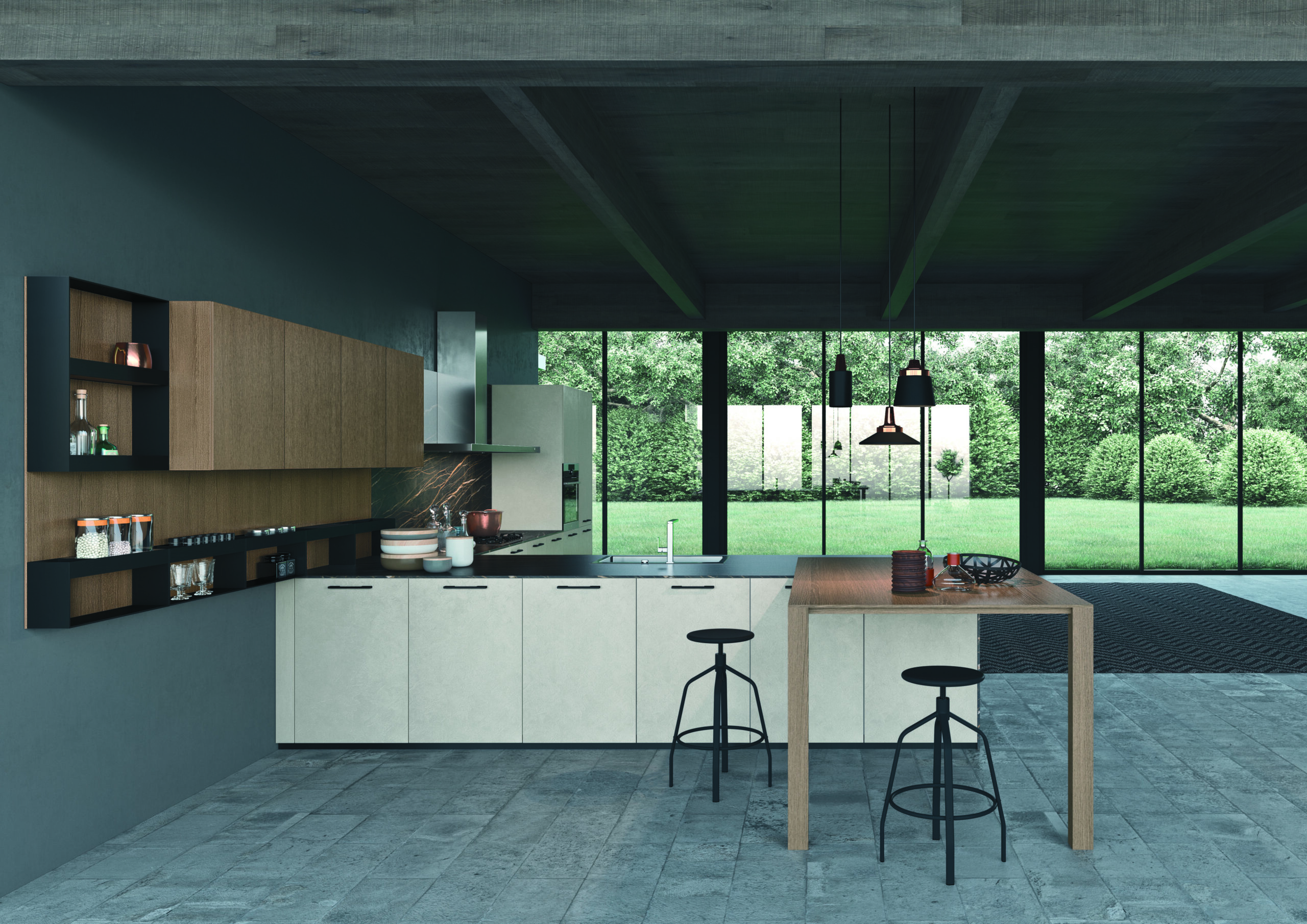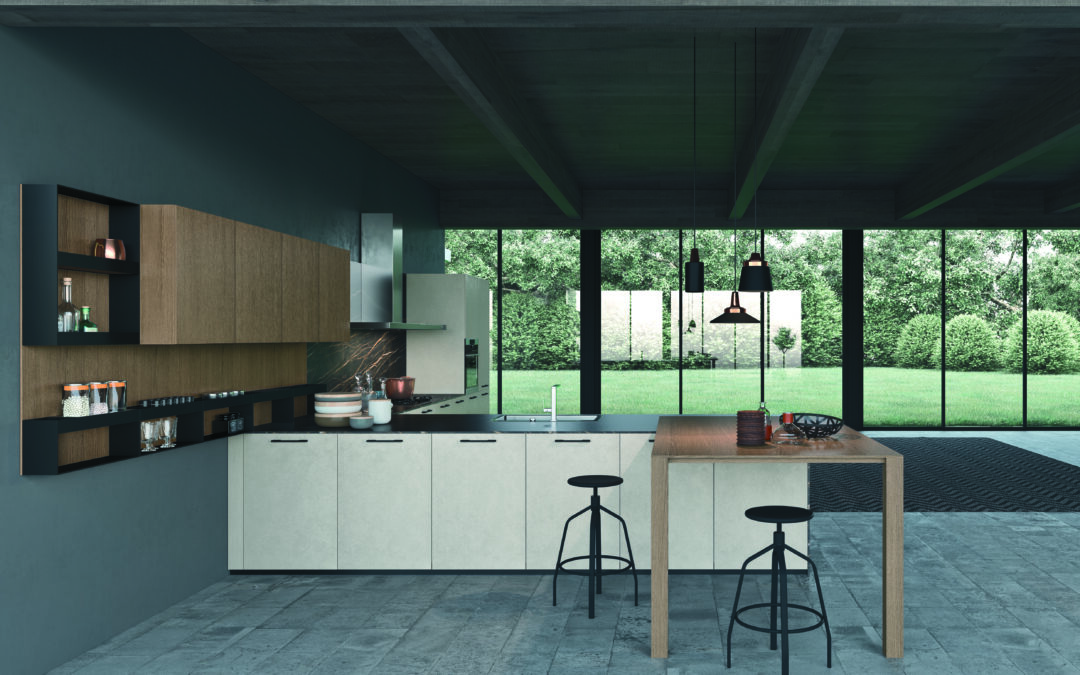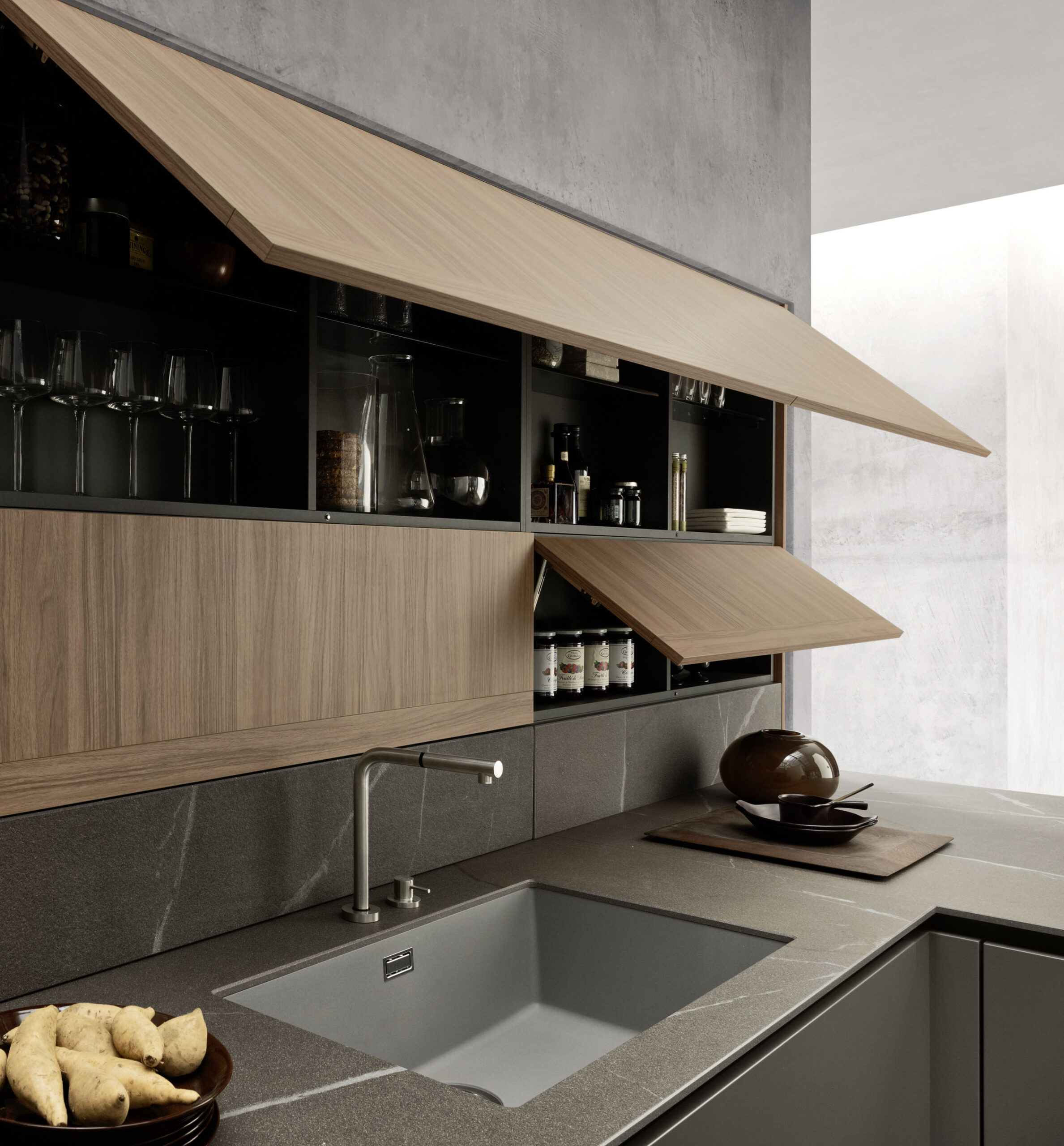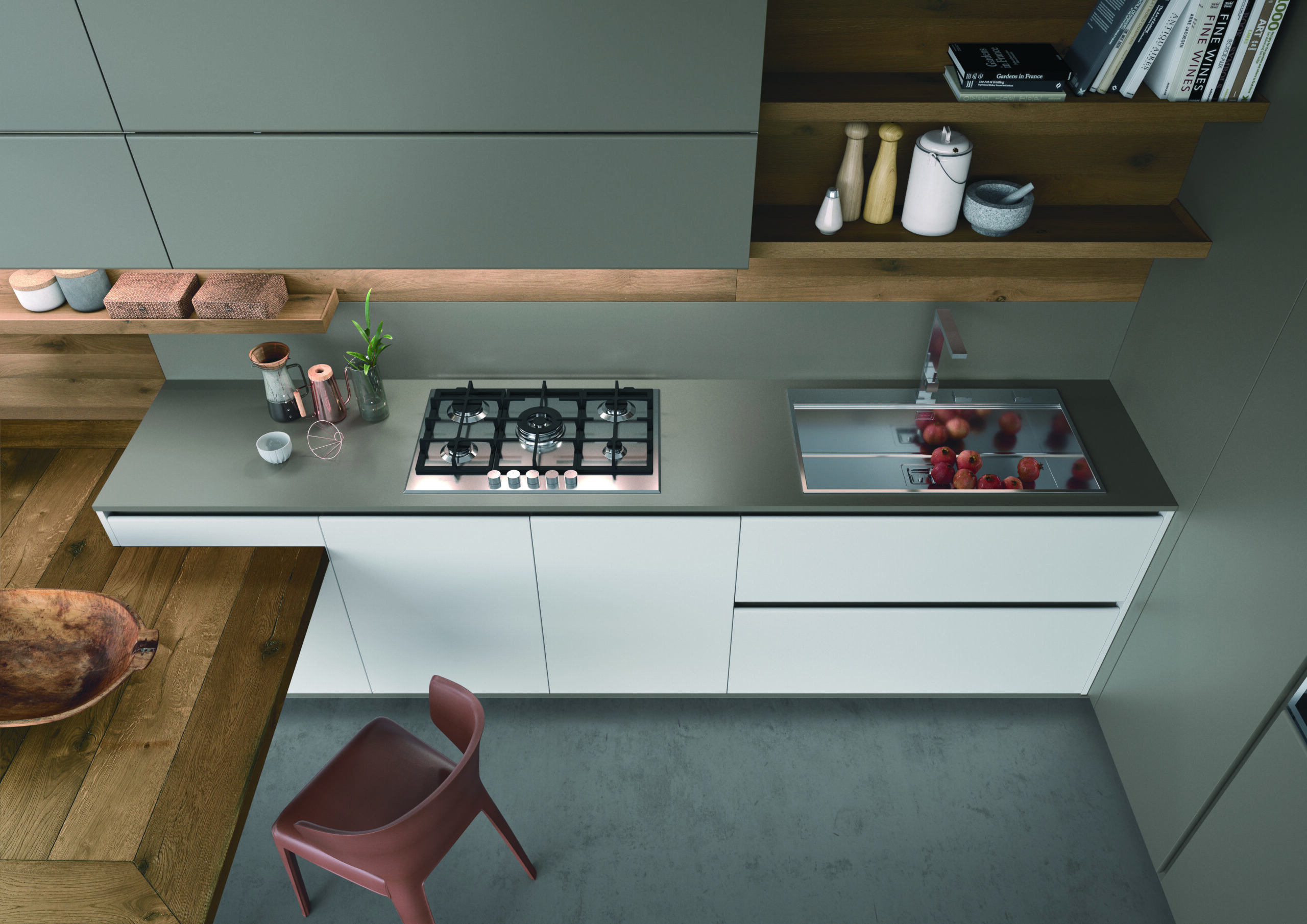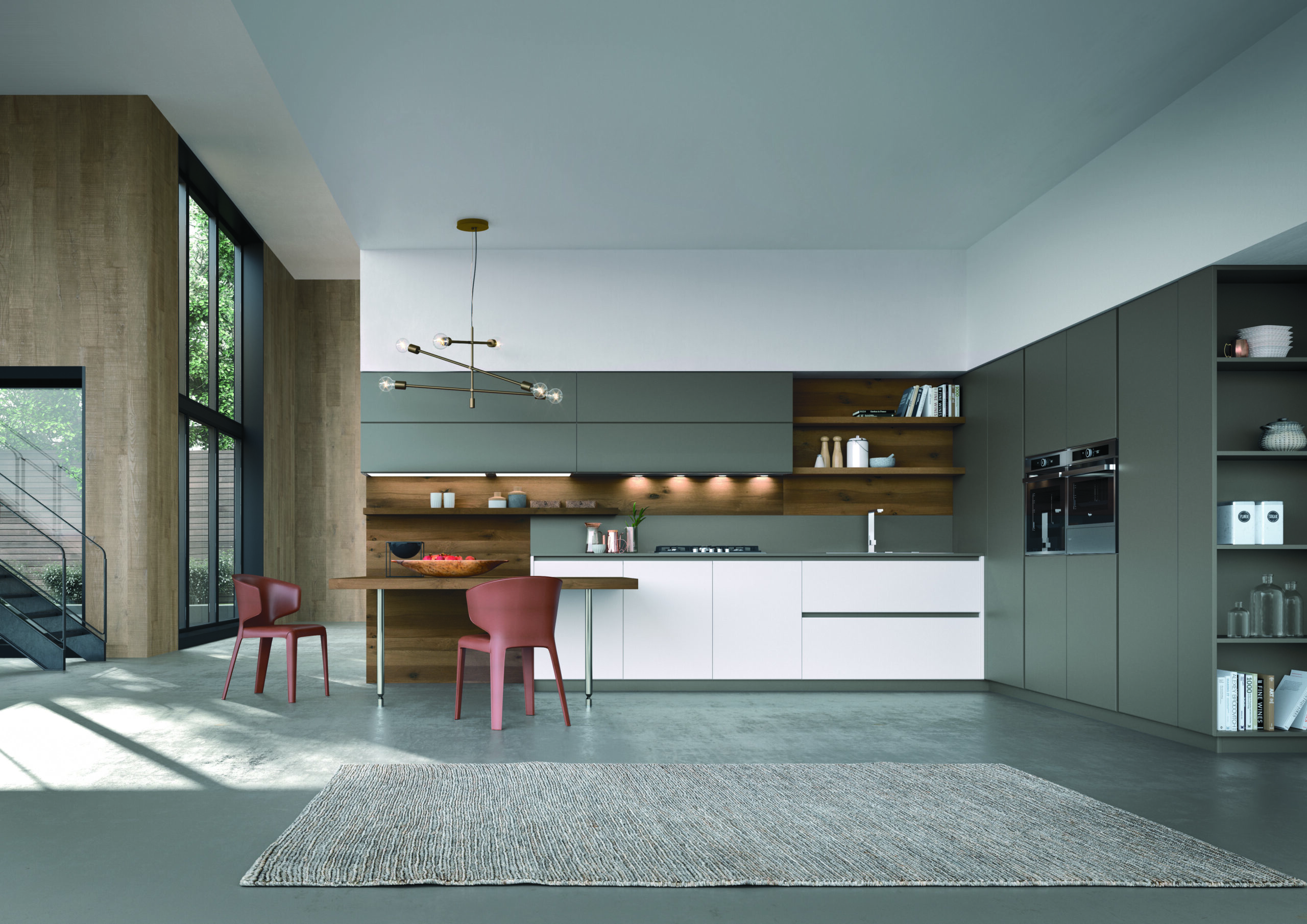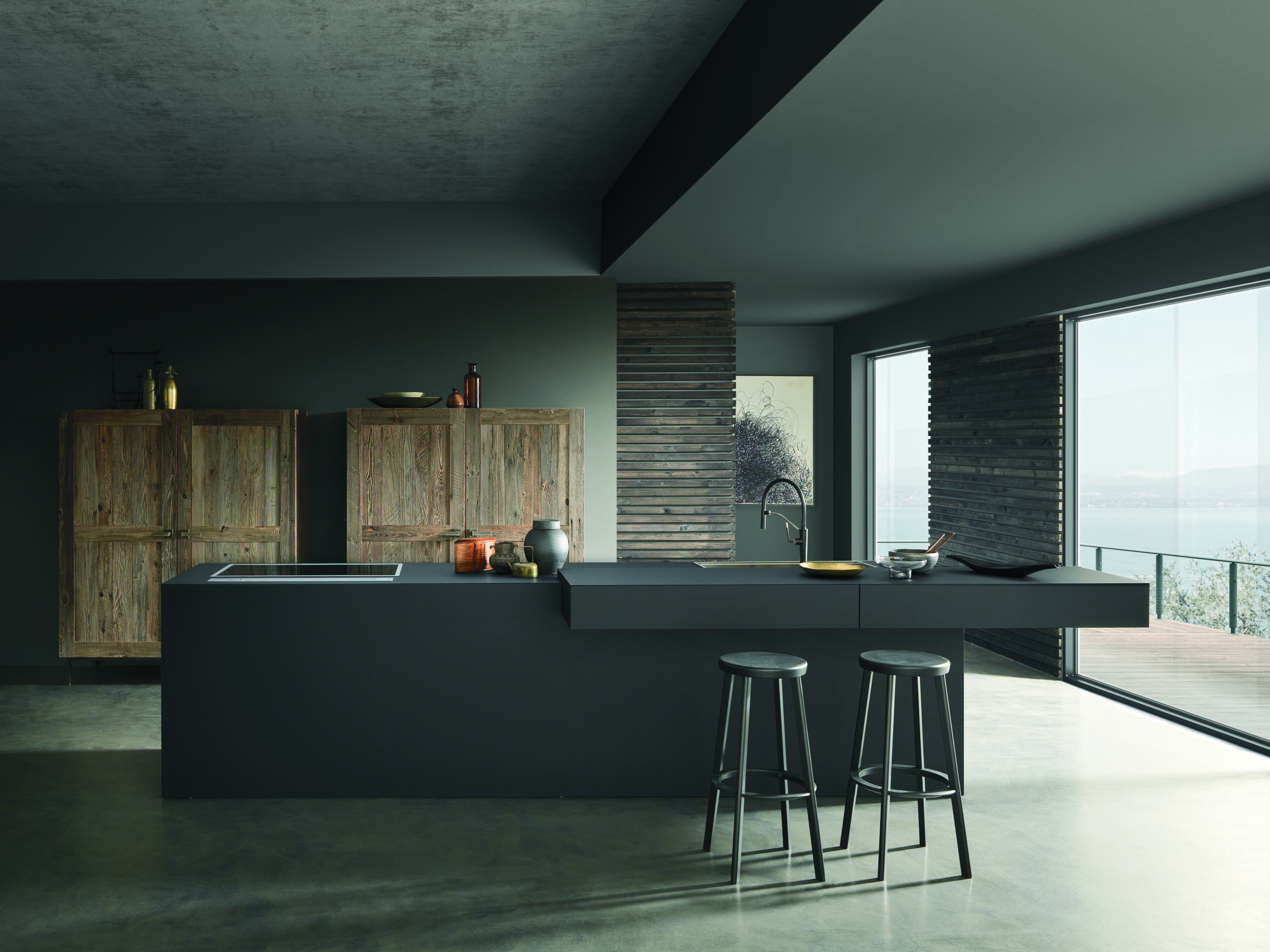10 Elegant Italian Kitchens: A Blend of Classic Charm and Modern Flair
Italian kitchens are a harmony of classic appeal and modern innovation. Are you considering embracing the Italian flair in your kitchen, or simply curious about what sets these designs apart? From the rustic charm of Tuscan interiors to the sleek lines of contemporary models, Italian designed kitchens are the heart of the home. This article explores the key features that define these spaces, offering insights and ideas on how to create your Italian-inspired kitchen without overwhelming fluff
Key Takeaways
- Italian style kitchens cabinets combine rustic Tuscan charm with sleek contemporary design, emphasizing natural materials and a seamless integration of functional and social spaces.
- Natural materials like wood, granite, marble, and stone are central to Italian kitchens aesthetics, creating a cozy, luxurious environment, while color schemes range from earthy tones to bold accents to define the kitchen’s character.
- Italian kitchen design and decor is a balance of old-world elegance and modern appliance integration, with meticulous attention to storage solutions, lighting, and personal decorative touches to enhance both functionality and style.
Modern Italian Kitchen Styles: From Rustic to Contemporary
Embodying chic elegance and functional design, Modern Italian luxury kitchens designs manifest in two main styles – rustic Tuscan and modern contemporary. The rustic Tuscan kitchen, often referred to as a rustic kitchen, is a tribute to Italy’s agrarian roots, featuring natural materials such as terracotta, wood, and stone. These kitchens often incorporate design elements like terracotta flooring, textured materials, and warm earthy colors, creating an environment that is both cozy and inviting. Added design accents like Fleur de Lis and Sonoma medallions in backsplashes further enhance the Tuscan style’s warm, rustic aesthetic.
Contrastingly, sleek, modern Italian kitchens sit on the other end of the design spectrum, offering a beautiful kitchen experience. These spaces are characterized by:
- Integrated appliances
- Streamlined designs that exude modernity and sophistication
- High gloss lacquer finishes
- Reflective glass surfaces
These elements align with current trends, creating a functional style that does not compromise on aesthetics.
Despite the stylistic differences, all Italian kitchens universally prioritize functionality and socializing. Many designs integrate the kitchen with dining areas, using natural color kitchen cabinets to maintain a seamless aesthetic. This focus on socialization and functionality is a testament to the Italian culture’s love for food and community, making the kitchen the heart of the home.
The Allure of Natural Materials
Italian kitchen designs significantly incorporate natural materials, instilling a warm, inviting atmosphere with a dash of luxury. For example, wooden units topped with granite worktops are a hallmark of Italian style kitchens, showcasing the use of luxurious yet homely materials. Stone-look, wood-look, and brick-look tiles can also emulate the aesthetic of natural materials in Italian kitchens, offering a cost-effective solution for those with budget constraints.
Furthermore, Italian Designer kitchens commonly utilize materials like:
- marble countertops
- travertine
- granite
- oak
- walnut
These materials, with their rich browns, not only add to the overall aesthetic but also significantly contribute to the cozy and inviting atmosphere that Italian kitchens are known for.
Fusing traditional Italian design elements such as stone and wood with modern appliances, Italian kitchens cultivate a unique blend of classic and contemporary styles. This careful balance of old and new makes Italian kitchens a timeless choice for homeowners seeking elegance and functionality.
Color Schemes for Italian Kitchens
Italian kitchen design also relies heavily on color, with schemes often mirroring the kitchen style. Traditional Italian kitchens, for instance, typically feature earthy tones such as sandy beige, pale yellow, or peachy pink, which are associated with Tuscan-style designs. This neutral color foundation establishes a versatile backdrop that can be livened up with colors and accessories without making the space feel overwhelming.
Yet, Italian kitchens confidently employ bold color accents. Strategic use of vibrant hues like red, orange, and blue can enhance the visual interest and personal flair within these spaces. Combining these vibrant colors with traditional materials like wrought iron can create a balanced transition between classic charm and modern style.
Consequently, during the design process of an Italian kitchen, the color scheme should be considered an integral part. It not only defines the overall aesthetic of the space but also contributes to the warm, inviting atmosphere that Italian kitchens are renowned for.
Storage Solutions and Functionality
Beyond aesthetics, Italian kitchens also place a high priority on functionality. One way this is achieved is through efficient layout designs that maximize storage space without compromising the overall form. For instance, the Orange series designed by Snaidero embodies this principle, combining a stylish design with practical storage solutions and ample storage space.
Open shelving is a common feature in Italian kitchen designs, providing easy access to items and contributing to a sense of openness. Besides enhancing the kitchen’s functionality, this design element allows homeowners to showcase their elegant kitchenware and accessories.
Furthermore, Italian kitchens often feature large sinks to support high-frequency cooking and food preparation. This essential element further underscores the functionality of Italian kitchens, ensuring that practicality is never sacrificed for style.
Combining Old World Charm with Modern Appliances
While retaining their traditional charm, Italian kitchens are not confined to the past. They often incorporate modern elements to create a unique blend of old-world charm and contemporary elegance. For instance, modern Italian kitchens often incorporate materials such as:
- high gloss lacquer
- matt lacquer
- wood veneers
- metal
These materials, including wood beams, lend a contemporary feel while maintaining a sleek design that complements classic architectural features.
Stainless steel appliances are another popular feature in modern Italian kitchens. These appliances are appreciated for their durability and contribute to the modern aspect of the kitchen without detracting from its traditional charm.
Even the traditional motifs can be combined with modern patterns to create a dynamic and visually interesting kitchen space. An even distribution of traditional and modern design elements within the kitchen helps to achieve a balanced and cohesive aesthetic.
Hence, a focal point, be it a statement range or an artistic installation, can unify the space and harmonize the contrasting design elements, regardless of their inclination towards traditional or contemporary aesthetics.
Textured Tiles and Backsplashes
Textured tiles and backsplashes can significantly enhance the aesthetic of an Italian kitchen. For instance, colorful tile patterns or a bold accent color in backsplashes are common ways to incorporate vibrant hues in Italian kitchens. Even traditional Italian design elements can be incorporated in unexpected ways, such as using classic tile patterns on a modern backsplash.
For Tuscan-style kitchens, limestone, sandstone, or travertine can be used to line the backsplash, adding a unique touch of authenticity. Alternatively, sculpted ceramic tiles in sleek, solid colors like white and beige can add earthy texture to the backsplash in a Tuscan-style kitchen.
Consequently, in your kitchen renovations, the potential of textured tiles and backsplashes should not be underestimated. They can serve as the perfect canvas to express your creativity, adding a personal touch to your kitchen.
Furniture and Seating Options
Selecting appropriate furniture and seating options can substantially elevate the comfort and style of your Italian kitchen. For instance, Tuscan kitchens often employ farmhouse tables as central furniture pieces. These tables, crucial for dining and socializing, feature traditional aesthetics with stately design elements, including burl inlays and book-matched veneered tabletops, finished with the warmth of cherry.
Chairs selected for Tuscan-style kitchen sets are typically large and heavy, offering a sturdy and luxurious aesthetic. Cushioned seats are added for enhanced comfort during long family gatherings, ensuring that everyone feels at home.
Additional details, like cast-iron fixtures, can amplify the rustic charm of Tuscan kitchen furniture, showcasing the blend of practicality and aesthetic appeal. To accommodate varying numbers of guests, Tuscan kitchens can feature extendable tables with pedestal bases, which offer stylish adaptability for different social events.
Lighting Ideas for Italian Kitchens
Lighting also plays a key role in Italian kitchen design. Traditional Italian kitchen designs enhance their aesthetic with rustic fixtures like wrought-iron chandeliers. Hand-forged wrought iron hanging lights can provide a Tuscan touch, especially when positioned over kitchen nooks or dining tables.
These lighting options are not just for indoor use; rustic farmhouse or Spanish-style pendant lights, when damp-rated, are also suitable for outdoor Italian kitchens. Pendant lights compatible with LED bulbs offer features like dimmability, allowing adjustment of the kitchen’s ambiance. Plus, these lights can be personalized through customizable options for finishes and glass, complementing the unique design of Tuscan-style kitchens.
Hence, in your Italian kitchen design, the influence of lighting on the overall ambiance should be taken into account. A well-placed chandelier or pendant light can transform the space, creating a warm and inviting environment.
Decorative Accents and Artwork
Personalizing your Italian kitchen with decorative accents and artwork can truly make it distinctive. For instance, incorporating an olive tree, growing an herb garden in the window, or filling the kitchen with fresh flowers can bring the natural charm of Tuscany into the space. Practical items like fresh lemons, jars of pasta, and bottles of wine can also serve as decorations, adding practicality and authenticity to the Italian kitchen.
Even everyday items like herbs, kitchen towels, pots, and quality oils can double as decor. When neatly arranged on shelves or countertops, they add a touch of functionality and visual interest. Similarly, copper accessories, like pans and light fittings, serve as staples in Italian kitchen design, offering a balance of functionality and decorative flair. In this context, kitchen tools play a significant role in enhancing the overall aesthetic of an Italian kitchen.
Finally, don’t forget to adorn your kitchen shelves with paintings and drawings. These pieces of artwork can complement the Italian aesthetic and add a touch of personal style to your kitchen.
Tips for Creating Your Own Italian Kitchen Oasis
If the thought of creating your own Italian kitchen inspires you, here are a few starting tips. First, consider consulting with an interior designer who specializes in Italian styles. This ensures that your vision aligns with practical design principles and authenticity. You might also want to work with a kitchen designer to tailor the layout and features to your personal cooking habits and space requirements.
Visiting kitchen showrooms can give you a tangible sense of the materials and craftsmanship that go into an authentic Italian kitchen. Note down features that resonate with your style for future reference. Additionally, make use of online platforms such as Pinterest and Instagram for a vast array of Italian kitchen design inspirations. Create a mood board with your favorite ideas to help refine your vision for the space.
Lastly, consider collecting Italian kitchen design magazines. These publications can keep you informed about the latest trends and time-tested styles, further refining your vision for your Italian kitchen oasis.
Summary
In conclusion, Italian kitchens, characterized by their blend of traditional charm and modern sophistication, offer a timeless choice for homeowners. Whether it’s the warm, earthy tones of a rustic Tuscan kitchen or the sleek, streamlined design of a contemporary space, the Italian kitchen is a testament to Italy’s rich culinary heritage and forward-thinking design. By carefully considering elements such as color schemes, materials, lighting, and decorative accents, you can create your own Italian kitchen oasis that perfectly reflects your style and culinary needs.
Frequently Asked Questions
What are the colors of traditional Italian kitchens?
Traditional Italian kitchens feature a rustic, warm style with a color palette focused on oranges, golds, and yellows to create a natural look.
How can I make my kitchen look Italian?
To create an Italian-style kitchen, use wooden units with a Shaker or inset door style, and consider using either knob or bar handles. Choose wood or granite worktops based on your personal preferences.
What does a kitchen look like in Italy?
A rustic Italian kitchen typically features natural wood finishes, stone or tile flooring, exposed ceiling beams, and warm earthy colors like terracotta and olive green. The design often incorporates wrought iron fixtures.
What are the two main styles of Italian kitchens?
The two main styles of Italian kitchens are rustic Tuscan and modern contemporary. Rustic Tuscan kitchens emphasize natural materials and warm, earthy colors, while modern contemporary kitchens feature sleek designs, integrated appliances, and modern materials.
What are some lighting options for Italian kitchens?
In Italian kitchens, you can choose from a variety of lighting options, including rustic wrought-iron chandeliers and modern pendant lights. Consider the overall style and functionality of your kitchen when making your selection.

